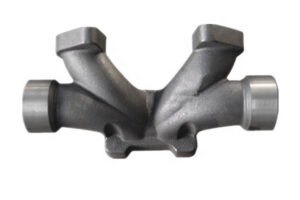The Art of Sand Casting: A Comprehensive Guide
 Sand casting is a popular method of creating metal objects that has been used for centuries. It is a process that involves pouring molten metal into a mold made of sand, which is then allowed to cool and solidify. This technique is widely used in the manufacturing industry to create a wide range of products, from small parts to large machinery. In this article, we will explore the art of sand casting and how it works.
Sand casting is a popular method of creating metal objects that has been used for centuries. It is a process that involves pouring molten metal into a mold made of sand, which is then allowed to cool and solidify. This technique is widely used in the manufacturing industry to create a wide range of products, from small parts to large machinery. In this article, we will explore the art of sand casting and how it works.
What is Sand Casting?
Sand casting is a process of creating metal objects by pouring molten metal into a mold made of sand. The sand is packed tightly around a pattern, which is a replica of the object to be cast. The pattern is removed once the sand has been packed, leaving a cavity in the sand that is the exact shape of the object to be cast.
The molten metal is then poured into the cavity, filling it completely. Once the metal has cooled and solidified, the sand mold is broken apart, revealing the finished product. The sand is then recycled and used again for future castings.
The Advantages of Sand Casting
Sand casting has several advantages over other casting methods. One of the main advantages is that it is a relatively inexpensive process, making it ideal for small-scale production runs. It is also a versatile process, allowing for the creation of complex shapes and designs.
Another advantage of sand casting is that it can be used to create large objects, such as engine blocks and transmission cases. This is because the sand mold can be made in sections, allowing for the creation of large, complex objects.
The Sand Casting Process
The sand casting process begins with the creation of a pattern. The pattern is made of wood, plastic, or metal and is a replica of the object to be cast. The pattern is then placed in a flask, which is a box-like container that holds the sand.
The sand is then packed tightly around the pattern, using a process called ramming. The sand is packed in layers, with each layer being compacted using a tool called a rammer. Once the sand has been packed, the pattern is removed, leaving a cavity in the sand that is the exact shape of the object to be cast.
The mold is then prepared for pouring. This involves creating channels, called sprues and runners, that allow the molten metal to flow into the mold. The mold is also vented to allow gases to escape during the casting process.
The molten metal is then poured into the mold, filling it completely. Once the metal has cooled and solidified, the sand mold is broken apart, revealing the finished product. The product is then cleaned and finished, ready for use.
Conclusion
Sand casting is a versatile and cost-effective method of creating metal objects. It is widely used in the manufacturing industry to create a wide range of products, from small parts to large machinery. The process involves pouring molten metal into a mold made of sand, which is then allowed to cool and solidify. Sand casting has several advantages over other casting methods, including its versatility, cost-effectiveness, and ability to create large objects. With its long history and continued use in modern manufacturing, sand casting is truly an art form.







